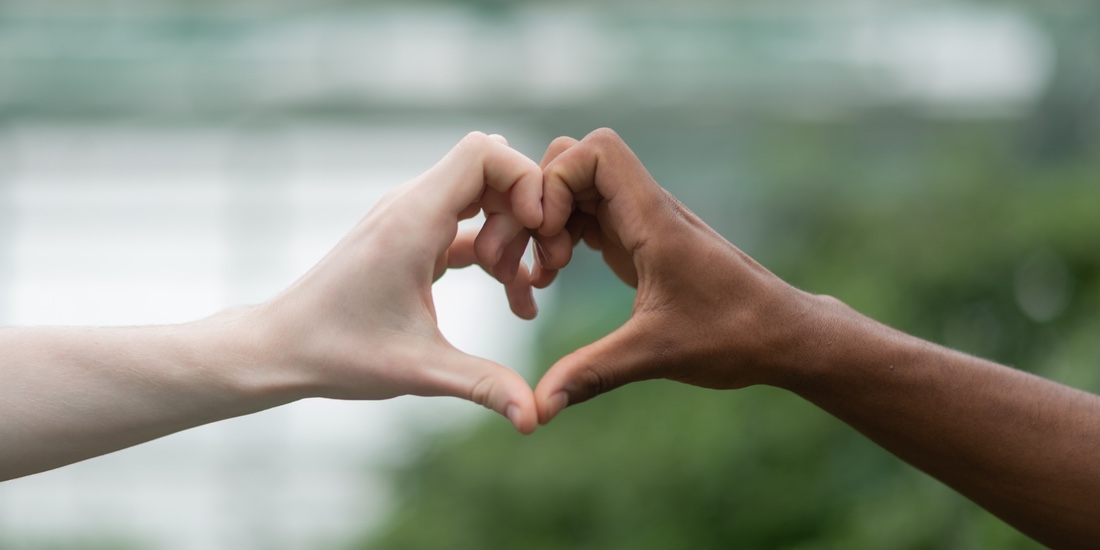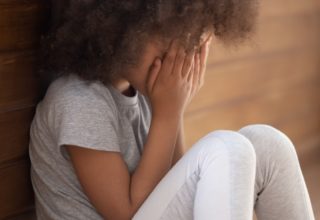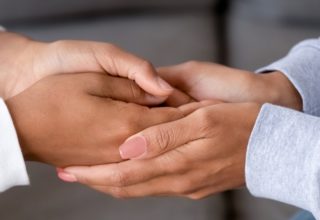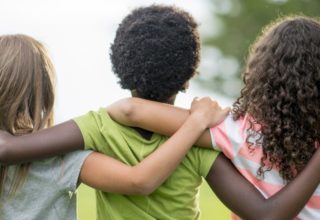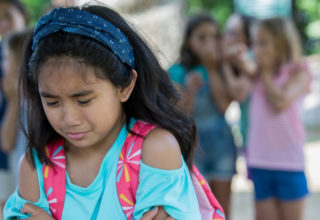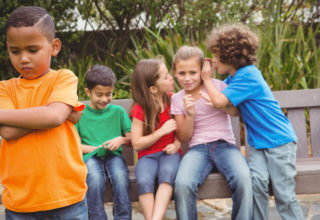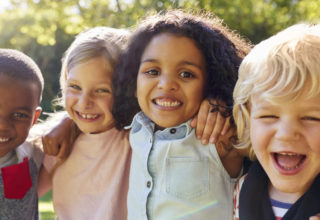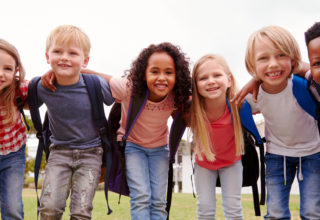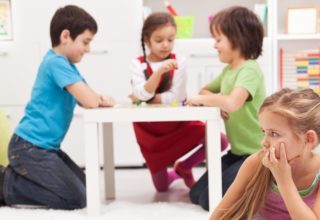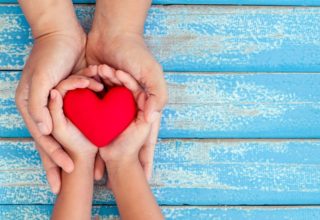A practical guide for navigating conversations with your child about racism, including helpful What You Could Say scripts on important terms such as systemic racism, racial bias, racial privilege and being anti-racist.
Learn
Racism has been a part of society for a long time. The concept of racism is not new – it has a long history of political and social meaning among countries and communities – but the concept of understanding the need for and benefits of actively and openly talking about racism with our children is relatively new. Racism is a complex topic and talking about it with your child may feel uncomfortable and complicated at first. Here are some basic concepts to get you started on introducing this necessary topic to your child.
Basic Concepts
Talking to Your Child About Race is Different from Talking About Racism
- It is important to talk to your child about race, but insufficient to only talk about race as your child matures.
- Race and racism are two different topics. Race can be defined as a grouping of people with shared physical or social qualities. Racism can be defined as when people are treated unfairly by other people or by systems because of their race.
- Race is not the same as skin color. Race is a social construct – an idea that has been created and accepted by people in a society. Skin color is based on science and the amount of melanin we each have.
Children Develop Racial Bias at an Early Age
- Evidence from the American Academy of Pediatrics suggests that a child’s social environment shapes their development – specifically, racism negatively impacts a child’s health and well-being through implicit and explicit biases, institutional structures and interpersonal relationships.
- According to pediatrician and public health leader, Dr. Jacqueline Dougé, ‘learning’ racism is like learning a new language for babies and toddlers; they learn just by picking up on racial stereotypes and social cues.
- As early as six months, a baby’s brain notices race-based differences; by ages 2 to 4, a child internalizes racial bias.
- Research shows that preschoolers demonstrate racial bias and pick up on prejudices from the adults around them.
- By age 5, a child already understands racial stereotypes in society, regardless of what their parents share with them. If you are not talking to your child about it at home, they are already formulating their own ideas.
- By age 12, many children have strongly established views on race and beliefs regarding racism.
Just Remember
- Children develop racial bias at an early age.
- It is imperative that parents talk openly about racism with their child, and actively construct a diverse social environment for their child.
Do
Core Marbles
- Talk to your child about race
- Get comfortable talking about racism and racial inequality
- Acknowledge your own biases with your child in age-appropriate ways
- Model, model, model
- Ask your child questions
- Empower your child
Tips for Talking with Your Child
Preschool-aged children may notice similarities and differences in skin tone. This is generally a good time to start talking about race. As a child enters elementary school, the conversation can shift to talking about racism. Honest and straightforward conversations lays the groundwork for future complex conversations. Talking about racism with your child is not a one-off event; it is an ongoing conversation – a process – that will develop as your child matures, so it is helpful for them to know you are a trusted source.
1. Talk to your child about race – Talking about race is healthy and important; talking about race does not mean you are racist.
2. Get comfortable talking about racism and racial inequality – Define important, socially relevant terms. Acknowledge that racial differences and biases exist. Explain injustice. Children intuitively perceive what is fair and unfair. Stick to facts; be clear about what is true and what is not true. Keep it simple (children are concrete thinkers). For example:
- On racism – “I know we’ve talked about race before and how there are different people in the world with different skin colors, ethnicities, cultures and languages. Now I want to explain something: it is not OK when people hurt other people or treat them unfairly just because of their race, skin color or the way they look. When people do this, it’s called racism. ‘Racism means to hate someone, exclude them, or treat them badly because of their race, or the color of their skin.’ There are many different shades of skin color and no one shade is better than another. But it is true that the struggle for racial fairness is still happening in many parts of the world.”
- On systemic racism – If developmentally appropriate, consider adding: “This struggle for fairness gets even harder when we talk about racism as happening throughout our society in many of the groups and structures that make up our communities, rather than an individual action. We call this systemic or institutional racism.”
- On racial bias – “Sometimes people judge other people based on the color of their skin without knowing them. Some people believe that some shades of skin are ‘better’ than others. This is called ‘bias’. Sometimes people realize they’re doing this and sometimes they don’t. We need to listen with respect. We need to be aware of how we talk and play with our friends. We need to remember that all shades of skin are beautiful. This is why it’s important that we learn from different perspectives – we can do this by having friends from different communities with many different skin colors, learning about the cultures, ethnicities and interests of people around the world, trying foods from all around the world, etc.”
- On racial privilege – “Sometimes, just by having a certain skin color, you receive more benefits and advantages, like the ability to go to school, get a job, go to the doctor or special access to things that not everybody has access to. When these advantages are not earned, we call them ‘privileges’. Privileges are not fair. Sometimes people don’t realize that they have these privileges. So, it’s important that we listen when our friends speak, and that we are kind and fair in how we play and include our friends.”
- On being anti-racist – “Many people are working hard to listen, learn and make sure that all people are treated equally. This means learning how not everyone is treated equally and then changing how we think or do things to make sure that everyone, regardless of their skin color and race, is treated equally.”
3. Acknowledge your own biases with your child in age-appropriate ways (and how you are working on it) – To be able to teach your child effectively and authentically, you must first confront your own biases and truths. They see the world through your eyes. This is an opportunity to acknowledge to your child that we are all actively learning, show them how to learn, and gain their trust for more complicated questions in the future. For example:
- “I noticed that I cook food only from where I’m from, so you know a lot about those foods. This means that we’re eating the same foods and are not trying new things. I’m going to add two dishes each week from another country. Can you help me find some recipes?”
- “I noticed I read magazines of people with all the same skin color in them. I want to change that. I’m curious what other people around the world are writing about.”
- “I’m trying to read books written by many different authors – different races, ethnicities, genders – so I can learn about different people’s experiences.”
- “I noticed that everyone on my team at work is from one gender and of the same skin color. I think this needs to change because I do not think we have a good mix of different ideas. I think I need to review how we are hiring people at my company.”
4. Model, model, model – You are your child’s first teacher and their example for tolerance, fairness and responding to similarities and differences. They notice your everyday words, actions and patterns of behavior. Your actions will mean more than your words.
5. Ask your child questions – Throughout your candid conversations, ask your child open-ended questions to gauge their understanding and comfort-level of the topic: “How do you feel about that?” or “Tell me more why you feel this way?” or “Tell me more about why you think that?” or “What do you think we could say differently?” Use questions to better understand what your child needs from you. Actively listen to their questions and feelings.
6. Empower your child – Help your child to navigate their own curiosity and interest and to learn from those who have successfully advocated for racial fairness. Share hope with your child that many people are working hard, and that your child can be a part of those efforts in their own way. Encourage your child to:
- Play with toys, read books, tell stories, listen to music and watch shows with characters of different skin colors, cultures and ethnicities; that take place in different countries; that highlight the scale of the world’s diversity. Help your child develop their racial cultural literacy and respect for differences.
- Listen with respect. Be kind, play fairly and be self-aware of how they include and treat others. Empathy can be taught.
- Ask you complex questions and critically think about how they view and play with their friends.
- Research shows that levels of bias are reduced when children are taught to pay attention to a person’s multiple attributes. For example, encourage your child to notice how friends of similar skin colors may like to eat, dress and play differently and how friends of different skin colors may like to eat, dress and play similarly.
- Be open to making mistakes. Mistakes will happen and that means your child is learning. If your child says something racially offensive, try following up with these examples to better understand what they meant.
- “Tell me more.” or “I’m listening. I want to learn more about why you think that way.” or “Tell me what that means to you.”
- “These ideas can be confusing and it’s OK to make mistakes when we’re talking about this. That’s how we learn. The important thing is we’re talking through these important issues.”
- “That word sounds hurtful, but I can tell you have a lot of big feelings. Let’s talk about some of those feelings.”
- Be an advocate. Read books, tell stories and watch shows that deal with discrimination, resistance, resilience and explain feelings from multiple perspectives; that highlight changemakers across history and their plight; that herald the freedom fighters to include women, young adults and children. Help your child identify where they see injustices, help them brainstorm ways in which they would like to see change and help them understand what it means to be an upstander.
- Get out there! Visit museums specifically devoted to other cultures, races or ethnic groups, bike ride through different neighborhoods, play in different sports leagues and participate in a wide variety of extracurricular events, are just a few examples. The key is to get as much exposure as possible to a wide variety of people and places.
For Younger Children
For Older Children
Voice of Freedom: Fannie Lou Hamer
Something Happened in Our Town
For Grown-ups

Misasha Suzuki Graham, Content Area Expert + Parent
Misasha Suzuki Graham is the co-founder and co-host of the award winning social justice podcast Dear White Women. She is also the co-author of Dear White Women: Let’s Get (Un)comfortable Talking About Racism. Misasha is a facilitator, writer and speaker regarding issues of racial justice and children, intersectionality, and systemic racism, and believes in the power of narrative and heart-led conversations to create intentional change. She is also a graduate of Harvard College and Columbia Law School, a practicing attorney, social justice advocate, and proud parent of two very active young boys.
For Younger Children
For Older Children
Voice of Freedom: Fannie Lou Hamer
Something Happened in Our Town
For Grown-ups
Teasing, name-calling, social exclusion or any other general unkindness that specifically relates to race, gender, religion or any aspects of...
While we may agree that it is important to speak about issues of race and racism, these layered and personal...
Parents are often unsure of how to talk to young children about race. But it is real and it is...
Teach your child to *THINK* before they speak – to consider the impact of their words (vs. their intent). A helpful...
The importance of being an upstander and the skills a child should learn to stand up and speak up for...
Core concepts your child should know when being an upstander and how to practice them at home among daily routines.
Is your child able and ready to say/do the upstanding thing? Help your child know what to say in-the-moment when...
Teach your child a strong Friend Skill Set that can help them establish healthy, happy friendships and that will support...
Strategies, tools and scripts for teaching your child how to practice being a ‘good’ friend.
Watching a child turn to you crying for the first time because “A friend said ‘I can’t play’”, is a...
Social exclusion is a main theme in a child’s development and there are many reasons why it happens. Empower your child to...
Empower your child with a valuable life skill – teach them how to express their emotions and desires during conflict.
Help your child learn how to resolve a social conflict on their own with this framework – Wheel of Choices.
“Empathy is when you’re able to understand and care about how someone else is feeling.” -Mark Ruffalo, Sesame Street
Go beyond “How was your day?” Our Top 10 favorite conversation starters can give you insight into what matters to...
A simple tip sheet for how to praise your child. Something more than “Good job” or just commenting on process and...
When your child starts demonstrating behaviors that show they are trying to ‘fit in’ or wants to ‘belong to a...
Keep your child safe from danger and empower them to be safe. Teach your child to protect themselves with important...
The benefits of mindfulness and how it can help your child thrive. How to naturally and authentically infuse mindfulness into...
Answers to our most popular questions on a heavy subject. From “How do I explain…” to “How do I teach…”...
